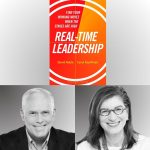Podcast Themes
Multiple perspectives on a topic that you are curious about!

Bill Campbell was known to have a “salty language” filled with expletives. Alan provides nuance around how Bill used his directness to land tough messages. He also goes on to talk about the safety net that Bill would create around the difficult conversation so that the leader does not get overwhelmed with the feedback.

What is common to radio, sonar and the internet? All these technological innovations, like many others, have their origin in war or conflict. Most have been researched and developed at military labs and then scaled up. Start-ups therefore, can benefit immensely from this experience. Hear Raghu talk about the need for a common vocabulary in order to achieve this. Hint: there is also a valuable tip about the “How” question.

Become privy to one of the army’s most efficient framework approaches: the Z-KITBAG! Raghu elaborates on this acronym and talks about how this structured approach can be used in any scenario- whether you are preparing for a talk or mobilizing your team for a launch.

The chain of communication in an organization – from the CEO to the salesperson on the streets- is one of the main factors for its success or failure. What steps can a leader take to ensure this chain of communication is seamless? Listen as Raghu talks about this and also shares an interesting anecdote about why cheaper phones in India have dual SIM facility!

Carol and David speak about how leaders can engage and effect change once they have been mindful across 3 dimensions, have generated adequate options and have validated the vantage point. This where the rubber hits the road. They speak about how leaders can get the intent across in these situations.

David speaks about the limitations of the feedback sandwich where the detailed negative feedback is often sandwiched between cursory positive feedback. He speaks about a better way of delivering direct feedback with empathy.

David speaks about why it is often so hard for us to stay on the same side of the net. He links that to our tendency to go for the simple plausible story and build misplaced conviction around it.

Thomas speaks about the criticality of labelling emotions that the other person is experiencing and that could be an opportunity to get to a better place.

Dan speaks about two types of Connection regrets – rifts (an event happens and people separate) and drifts (where people move away from each other slowly). He speaks about having a bias for action when it comes to these kinds of regrets as over the long term people regret omissions much more than commissions.

Pradeep speaks about the parallels between how a kingdom expands and the dynamic between the Corporate Office and the various branches. He speaks about the criticality of having a connect with the various corners of the business.

Rajiv breaks down the notion of Executive Presence and speaks about some of the elements that constitutes it. He speaks about importance of gravitas, credibility, quality of communication and appearance. He also expands on the notion of Authenticity and the link with credibility and presence.

Darleen speaks about how leaders should walk the tightrope between letting people be, giving them autonomy and seeking performance. It is a fine line and it is easy to swing too far without realizing it. She speaks about the ATC (Action, Timetable, Check-in) approach in dealing with colleagues.